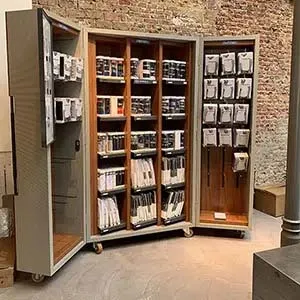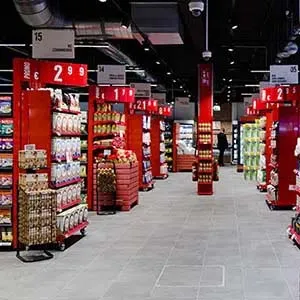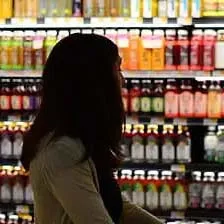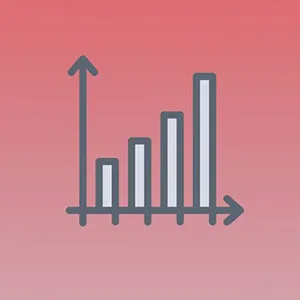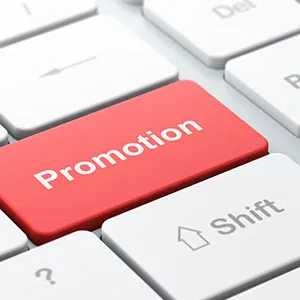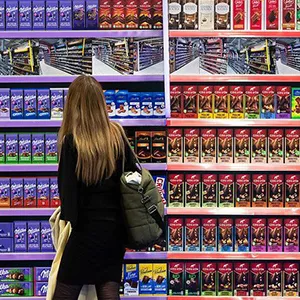The return on investment of POP display
definition and how to calculate ROI
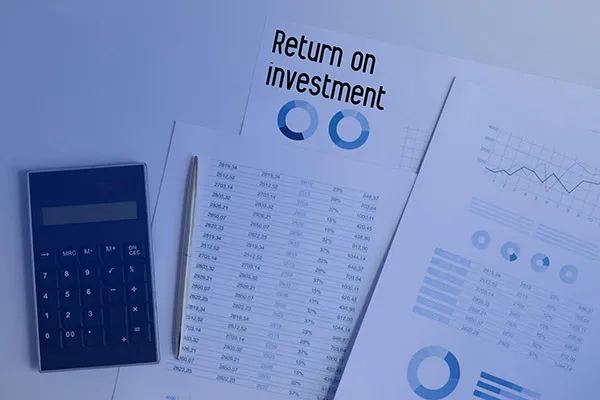
Point of purchase display advertising is a way to draw shopper attention to an offering in stores. They are often used at the occasion of marketing initiatives, such as introductions, promotional or seasonal offers, activations, etc. The main objective is to develop sales opportunities.
Point of purchase campaigns can take many forms. In most cases, they are carried out through the use of practical solutions, such as display materials. In a few seconds these materials provide visitors a visually exciting exposure to product and brand.
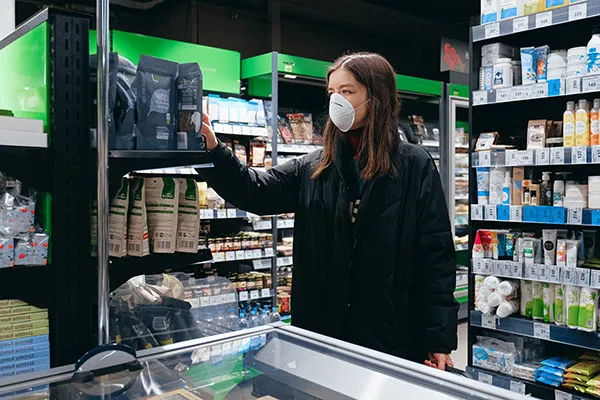
For example, consider a shopper rushing through his weekly shopping. Usually running on autopilot, he is concerned with his (mental) shopping list. Getting him to change his usual patterns is a challenge. POP display can provide visual relief during this task-driven exercise. Shoppers are likely to experience such disruptive offers as exciting and seducing.
At the heart any point of in-store effort, there's a solid return on investment (ROI). Let's have a look at how to measure in-store ROI.
Capturing consumers’ attention during the crucial moment when they are shopping is much more profitable than relying on their memory to include your article in their shopping list, be it a mental or a written list.
Pilotes makes commercial furniture, display and merchandising solutions. We offer 100% customized point-of-purchase materials tailored to the in-store projects of brand and retail. Because we care about the climate and environment, we analyze the lifecycle of each project to avoid, reduce, and offset its impact 🌍🌿
Do you have a project planned? Contact us and let’s bring your vision to life together!
How much do POP display materials cost ?
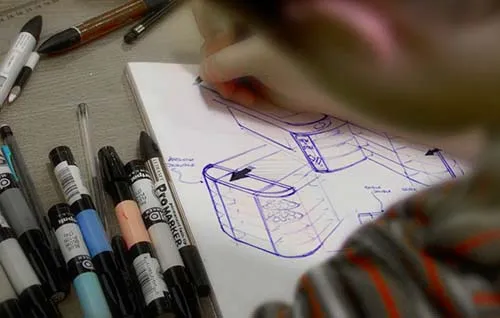
POP display is a contextual form of sales promotion that comes in multiple forms and serves a variety of purposes. Therefore, there isn’t a definitive answer. The cost depends on a wide set of factors, such as size, shape, function, brand image, materials required to construct, expected lifespan, etc.
Temporary corrugated display units are designed to present a promotion over short periods of time. Commonly found at grocery stores, they represent the most economical solution, but are limited in use and wear down quickly.
A permanent display material serves functional purposes for a period of one to three years (or even longer). As you might expect, functional displays need to be constructed out of sturdy materials, such as metal, plastic, wood. The general perception is that the more permanent a display is, the more it cost. The reality is more complex, as it depends upon needs, function and desired lifespan.
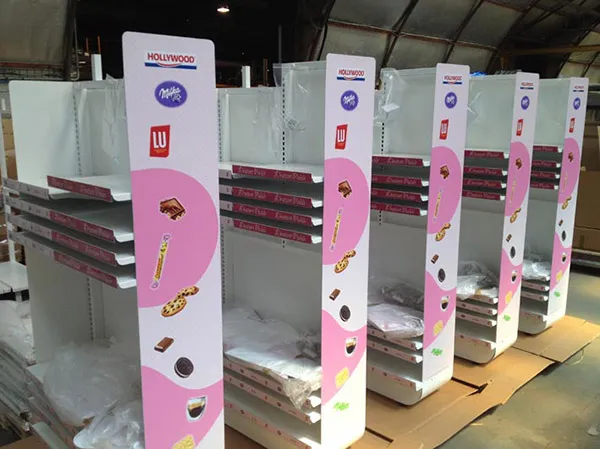
Manufacturing and packaging represent likely the most important cost, but the total cost for the investment may include a number of other costs:
- research, creative development, prototyping and eventual IP-rights
- artwork and imagery
- accessories, such as LED-light, technological equipment, …
- inbound and outbound logistics, warehousing
- placement fees
- instore operations, such as setup, maintenance, merchandising, energy consumption, take-down …
Considering fixed costs and economies of scale, the number of units manufactured affects the price. The more produced in one production run, the lower the cost per item.
It is worth remembering here that, depending on complexity, you can expect a process of on average three to four months before installation of a functional display in store. Count on a period of 2 to 3 weeks to develop ideas, 3 to 4 weeks for technical engineering and prototyping, and finally a minimum of about 6 weeks for production, after which logistics and instore operations can start.
What are the benefits of POP display materials ?
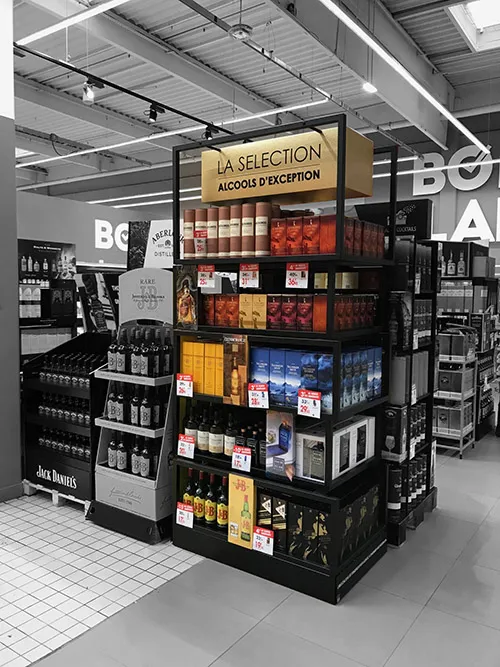
There's no right or wrong approach to POP display. Its efficiency doesn't only rely on how spectacular it is. When done well, even the simplest effort can come with many tangible and intangible benefits, short and long-term.
- a choice enjoys stronger merchandising and appeal at the moment it counts most
- display introduces a brand and its story to new customers
- a display connects on your own terms to acquire prospect clients and maintain a relationship with them
- a display provides invaluable information on a product, directs choice and inspires
- displays let prospects fully experience an article and allow the ability to make an informed, confident purchase
- they can be set up exactly where you want them to be, or in high trafficked areas, such as the ‘fast track’ or the checkout zone
- they give access to stores, that would have been impossible without a display
- ...
Often considered as the final scene of the shopping journey, a display drives consumer preference for product and brand. After an instore campaign, brands will enjoy increased awareness and continue to deliver sales in the longer term.
All the above add up to incremental sales, ultimately the most essential meaning of any promotional effort.
The elasticity of instore visibility
Let’s get academic for a moment. Elasticity refers to the degree to which consumers change consumption in response to change in another variable. It is often used to assess the changing consumption as a result of a change in price. Price elasticity suggests that demand for a product can be affected by price.
$$Price\,elasticity\,=\,\frac{\text{%}\,change\,in\,consumption}{\text{%}\,change\,in\,price}$$
$$Price\,elasticity\,=$$ $$\frac{\text{%}\,change\,in\,consumption}{\text{%}\,change\,in\,price}$$
Marketing elasticity measures the sensitivity to changes in marketing spend. It measures the campaign's
efficiency in generating incremental sales. A positive marketing elasticity indicates that an increase in
marketing leads to a rise in demand.
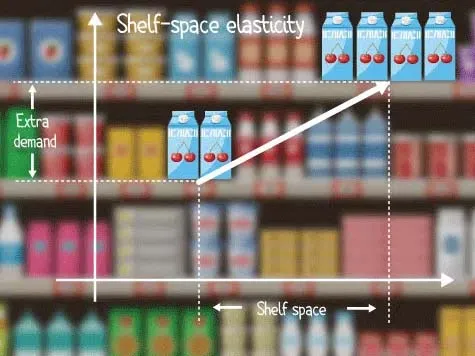
Shelf-space-elasticity, at last, measures the sensitivity of consumption to increases or decreases in shelf space. If an article is given a larger shelf space, it is extra-visible and more likely to be seen by visitors. Offerings that receive more visibility are thought to be more successful and hence are more valuable in the eyes of consumers.
Shelf-space-elasticity has been studied since the 1960, both with consistent and ambiguous findings. On average, shelf-space-elasticity is estimated between 1.17 and 1.20, depending on product, category, location, store format, … In others, if shelf allocation doubles, demand will rise by an average 17 to 20%, with stronger increase for impulse-sensitive items. And the elasticity is stronger when increasing than decreasing shelf-space!
The sales lift as a result of extra-visibility and changes in physical space in a store is essential to evaluate the efficiency of POP display advertising.
The efficiency of POP display materials
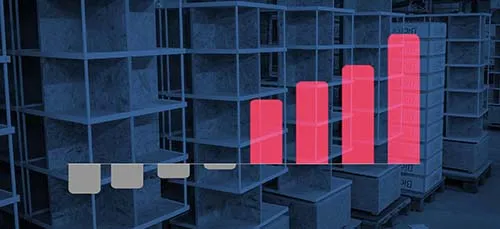 Efficiency is crucial for all marketing activities, though intangible benefits, such as brand awareness,
customer relationship and education about benefits, make measuring impacts a challenge.
Efficiency is crucial for all marketing activities, though intangible benefits, such as brand awareness,
customer relationship and education about benefits, make measuring impacts a challenge.
Marketing professionals can use various methods to evaluate the success of their efforts, one of which is return on investment (ROI). By calculating ROI, marketeers measure how much more profit they contribute with the money they invest. A high ROI means profits compare favorably to cost. The concept of profit generation is important in this context. Return on Marketing Investment (ROMI) is not assessed by incremental sales, but by the extra profit the initiatives generate.
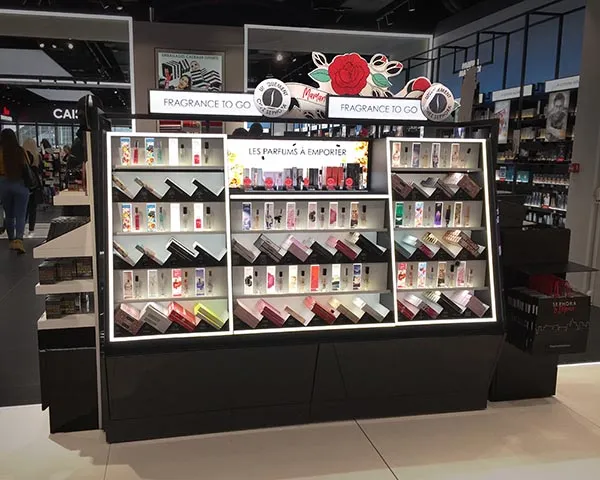
Typically, ROI is used as a reference to marketing budget for ongoing and future activities. By understanding the impact of each campaign, marketeers can prioritize subprojects and identify the most rewarding promotion mix.
Discover more > The Role of POP in the Promotion Mix.Because sales is the crux of retail, display initiatives are often put in the category of sales promotion. Therefore, ROI is the traditional metric to evaluate. But more importantly, because displays are polyvalent solutions without limits, ROI ensures that the efforts are in tone with the financial viability of the offering on display within a particular shop environment. Therefore, marketers calculate if the benefits, expressed in extra profit generated, outweigh the cost of the investment.
$$ROI = \frac{(sales\,\times\text{%}\,profit\,\,margin)\,–\,display\,\,investment}{display\,\,investment}$$
$$ROI =$$ $$\frac{(sales\,\times\,\text{%}\,margin)\,–\,investment}{\,investment}$$
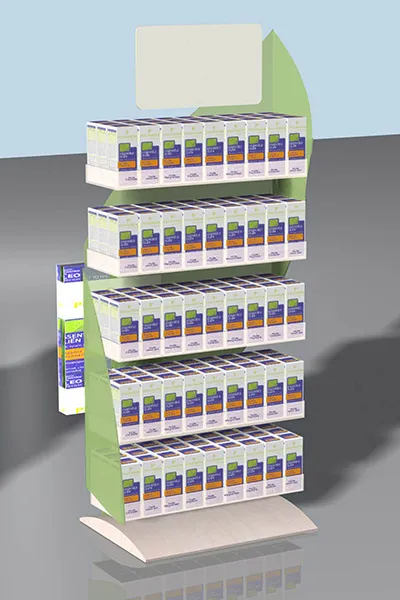
So far for the equation, the easy part. In order to measure and compare ROI accurately, there should be a clear standard and a sales line to measure. And then, campaigns focused on driving long-term or intangible benefits often take months or years to penetrate. Additionally, ROI measurements should account for external factors that impact campaign success.
POP business plan: an example

A laboratory for medical aromatherapy markets a set of 45 essential oils through the pharmacy channel. Per practice, the lab sells an average of 20 flasks per week. The average consumer price is 7,5 eur, the wholesale price is about 4 eur. The gross margin for the lab is 30%.
To stimulate brand awareness, the marketing director wants to develop a countertop display for the entire range. Per reference, the display should carry 3 units. This POS material is expected to promote sales by 25% over a period of 18 months. The finance director understands the intangible benefits of this communication project, but he puts forward a ROI of 2 to 1. That's pretty fierce, but let's stay sporty; the ROI of future subprojects is based on assumptions they do not always achieve.
What is the target budget for the display investment?
$$Sales\,per\,month\,=\,100\,\times\,4\,=\,400\,eur$$ $$Extra\,sales\,per\,18\,months\,=\,400\,\times\,25\text{%}\,\times\,18\,=\,1\,800\,eur$$ $$ROI\,=\,\frac{(1\,800\,eur\,\times\,30\text{%})\,–\,180\,eur}{180\,eur}\,=\,200\text{%}$$
$$Sales\,per\,month\,=$$ $$\,100\,\times\,4\,=\,400\,eur$$ $$Extra\,sales\,per\,18\,months=$$ $$\,400\,\times\,25\text{%}\,\times\,18\,=\,1\,800\,eur$$ $$ROI=$$ $$\frac{(1\,800 eur \times 30\text{%})–180 eur}{180 eur}=200\text{%}$$
The target budget for the investment is 180 eur per unit. Taking into account the fixed cost for creative development, the budget per unit is feasible under the condition that 500 units are produced and placed. Therefore, the display is offered free of charge to pharmacists when purchasing the complete set of 135 articles.
Imagine that some practices experience a sales lift of only 8%. The ROI in those practices is negative. At a next opportunity, they might be approached differently.
Marketers can usually determine what the investment is, but not always relate them to return. Therefore, based on experience for a particular category, they sometimes use more straightforward metrics, such as the ratio of investment to retail value of the items on display (18%). Or investment over retail sales (11%). Or they benchmark competitive projects; after all, retail is a battlefield.
Key takeaways
POP materials boost your chances of communicating your brand to thousands of interested shoppers who are ready for immediate action. After all, more than 70% of decisions are made in-store.
Maximizing the efficiency of POP display initiatives requires a combination of design, practical know-how and creativity to engage shoppers, but the ultimate marketing goal is to persuade them to buy.
Measuring ROI will help you defend your choice for in-store marketing, so that you can create effective POP display materials that enhance the buying experience for your shoppers and stimulate sales for your brand and retailers.
Date: April '21 - Photo credits: Pexel & own
Do you wish to stimulate sales for your brand with extra instore visibility? Reach out today to set up a free consultation. We'll find the best solution for your brand.
